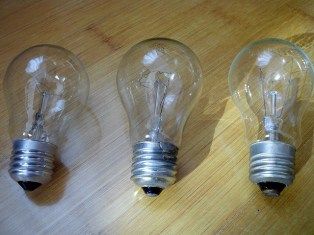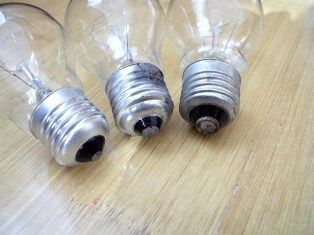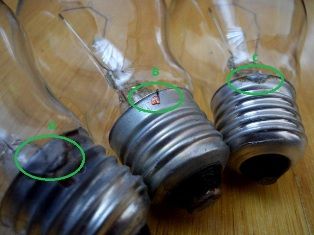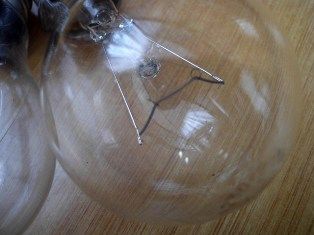Categories: Featured Articles » Sources of light
Number of views: 285299
Comments on the article: 18
How to choose a quality incandescent lamp
 We live in an amazing time when the word "economy" penetrates into all spheres of life. Just some 10 years ago, few people thought that soon from the usual incandescent lamps, those "Light bulbs Ilyich"will have to decline in favor more economical LED and fluorescent analogues.
We live in an amazing time when the word "economy" penetrates into all spheres of life. Just some 10 years ago, few people thought that soon from the usual incandescent lamps, those "Light bulbs Ilyich"will have to decline in favor more economical LED and fluorescent analogues.
Unfortunately, the proposed alternative solutions are not a panacea, because due to the simplicity of the design of an incandescent lamp, its cost is extremely low, and the dissipated thermal power is sometimes in demand, for example, in domestic incubators.
Currently, the production of incandescent lamps is gradually being phased out. Because of this, it is becoming increasingly difficult to find a quality inexpensive product: you won’t surprise anyone with a situation where a lamp left by grandfather works properly for 5-10 years, and a recently purchased one fails for several months.
In fact choose a quality incandescent lamp it is possible, but for this, when buying, you should pay attention to several key features.
Base cap - lamp base
For example, take three lamps of the same power from different manufacturers (Fig. 1).
Fig. 1. Three incandescent lamps from different manufacturers
The picture clearly shows that the design of the lower contact of the base is different for everyone (Fig. 2, 3).
Fig. 2, 3. The lower contact of the base of the three incandescent lamps
Theoretically, this difference should not affect the performance of the lighting device, but in practice, everything is a little different:
- type "A". The contact area of such contact with a copper “tongue” (central spring-loaded contact) in the cartridge is smaller than with other implementations. With frequent replacement of lamps, the tongue has the property of moving slightly to the side, so sometimes the contacts can not touch because of this, and even a working lamp does not shine. The most unfortunate decision;
- type "B". The contact area is reduced, but it is, nevertheless, larger than in the first case. Compromise solution;
- type "C". Large copper pad. It works without problems even in worn cartridges. The only thing - such a contact should not have any play.
Soldering: Proven Reliability
The method of connecting the outer part of the current lead to the base is also different (Fig. 4, 5)
Fig. 4, 5. Top contact of the base of incandescent lamps
At the moment there are two of them: using spot welding (type "B") and classic soldering (type "A", "C"). Although welding looks more technologically advanced, however, often such a connection tends to break down. Perhaps this is a manufacturing defect, but there were precedents. Therefore, the most reliable is a quality-soldered current lead (type “A”).
The filament is different for different manufacturers. The most widely used are tungsten filaments, but are sometimes found from an alloy of tungsten with osmium. The picture shows the difference in length. Usually alloy threads are more durable. Perhaps this is due to the more frequent arrangement of the supporting hooks, due to which the sagging of the thread is reduced.
Reliable hold above all
The glass bulb is connected to the metal base using a special mastic. Its layer is easily visible through the transparent glass of the flask. One of the lamps showed that the manufacturer decided to save on this component (Fig. 6).
Such a lamp is doomed to an early failure. After a while, the bulb, due to constant heating, will come off the base, hang on the current leads, and fall. In any case, a manufacturer who monitors the quality of his products will not allow himself such “savings”. Better to refrain from acquiring.
Fig. 6. Resin composition
Crimp Filament
Frequent the cause of "burnout" of incandescent lamps poor-quality fixing of the filament is supporting electrodes (Fig. 7). It is possible to hide this drawback only in matte lamps. When buying transparent models, you need to pay attention to this point. The picture (Fig. 8) shows what a reliable crimp should look like.
Fig. 7. Defect crimping the thread of the channel
Fig. 8. Correct crimping of the filament
Following these simple recommendations will allow acquired incandescent lamps to delight others with their light for a long time.
Dmitry Babin
It is interesting: Who actually invented the incandescent lamp
See also at bgv.electricianexp.com
:








